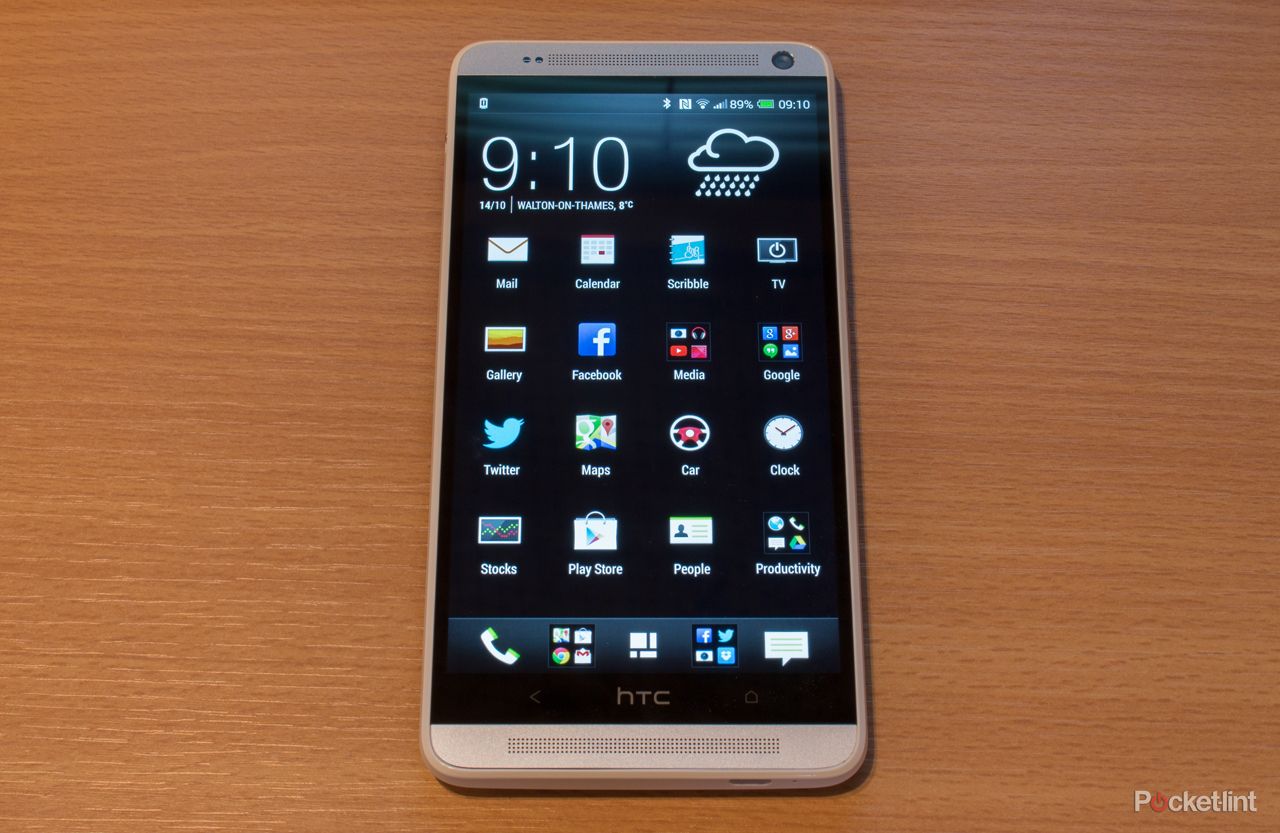The HTC One max is the third member of the One family, joining the HTC One and the HTC One mini. This time, however, HTC pushes well into phablet territory with a device that offers a 5.9-inch display, wrapped in the aluminium body that characterises these handsets.
Our quick take
The phablet category of devices is an odd one. The home of giant phones that haven't quite reached tablet sizes, and the HTC One max finds itself nestled into this awkward pack. For those looking for a big smartphone experience, then that's what the HTC One max delivers: it's the HTC One experience, but on a larger scale.
There are some notable benefits: the display is lovely, the microSD card convenient, the BoomSound speakers excellent and the user interface nicely refined. The aluminium finish still looks great compared to some plastic rivals and it's on these points that you should consider the HTC One max.
However, it's not the most powerful device out there and if you're looking for innovation at this size, then the Samsung Galaxy Note 3 takes the praise: Samsung invented this kingdom of huge devices and still looks to rule it. No integrated stylus sees the HTC One max be a different kind of prospect, no software functions looking to utilise the additional space feels like a missed opportunity.
The fingerprint scanner doesn't bring a huge amount of excitement and the older hardware, on a device launched this late in the year, makes the HTC One max feel a little late to the party. Early indicators suggest that the HTC One max will be £600 SIM free, which is a little too close to the price of the Galaxy Note 3 to make it look like good value.
For all that the HTC One max does right, it doesn't challenge the HTC One's dominance of this family. The original handset feels better in the hand, it's nicer to hold and use day-to-day and, once the update to Sense 5.5 arrives, it will offer all the same software refinement of the One max too. And you won't lose the optical image stabilisation either.
The HTC One max won't be for everyone, but if you've got big pockets and want the HTC experience on a bigger phone, then this is the One for you. But we suspect that for many, the original HTC One will be the better option.
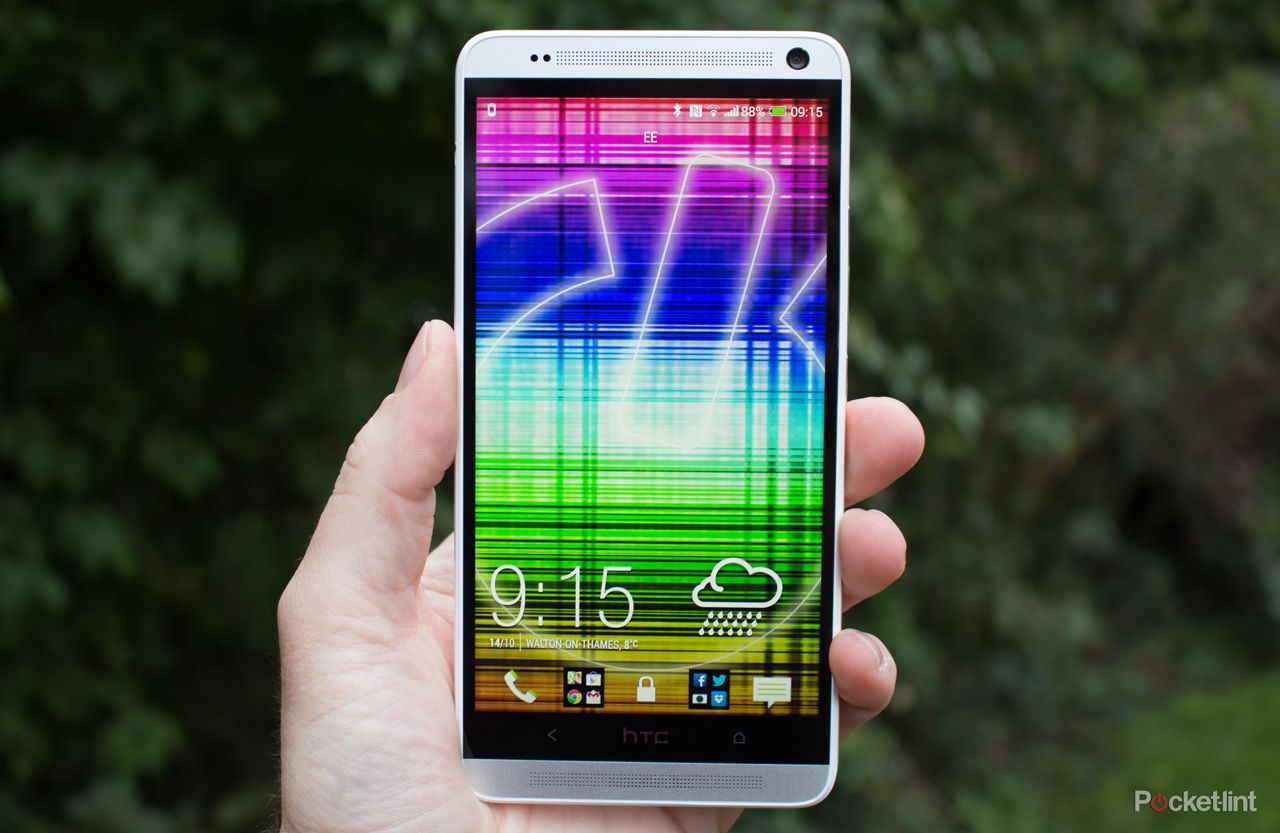
HTC One max - 3.5 / 5
| FOR | AGAINST |
|---|---|
|
|
But its arrival comes at a strange time. The HTC One has been on the market for 7 months and the One max, arriving with similar specs, could find itself dismissed as being out of date as soon as it goes on sale.
Perhaps more importantly, there's been a growing number of large rivals to challenge HTC's new venture and with rave reviews landing for the Samsung Galaxy Note 3, does the HTC One max have what it takes to draw the eye of those looking for a larger device?
Designed to be… the same
The HTC One max is designed to fit in with the rest of its family members. We say family, because HTC is pushing this very much as a family of devices. That means it arrives with design features that make it instantly recognisable as a One device.
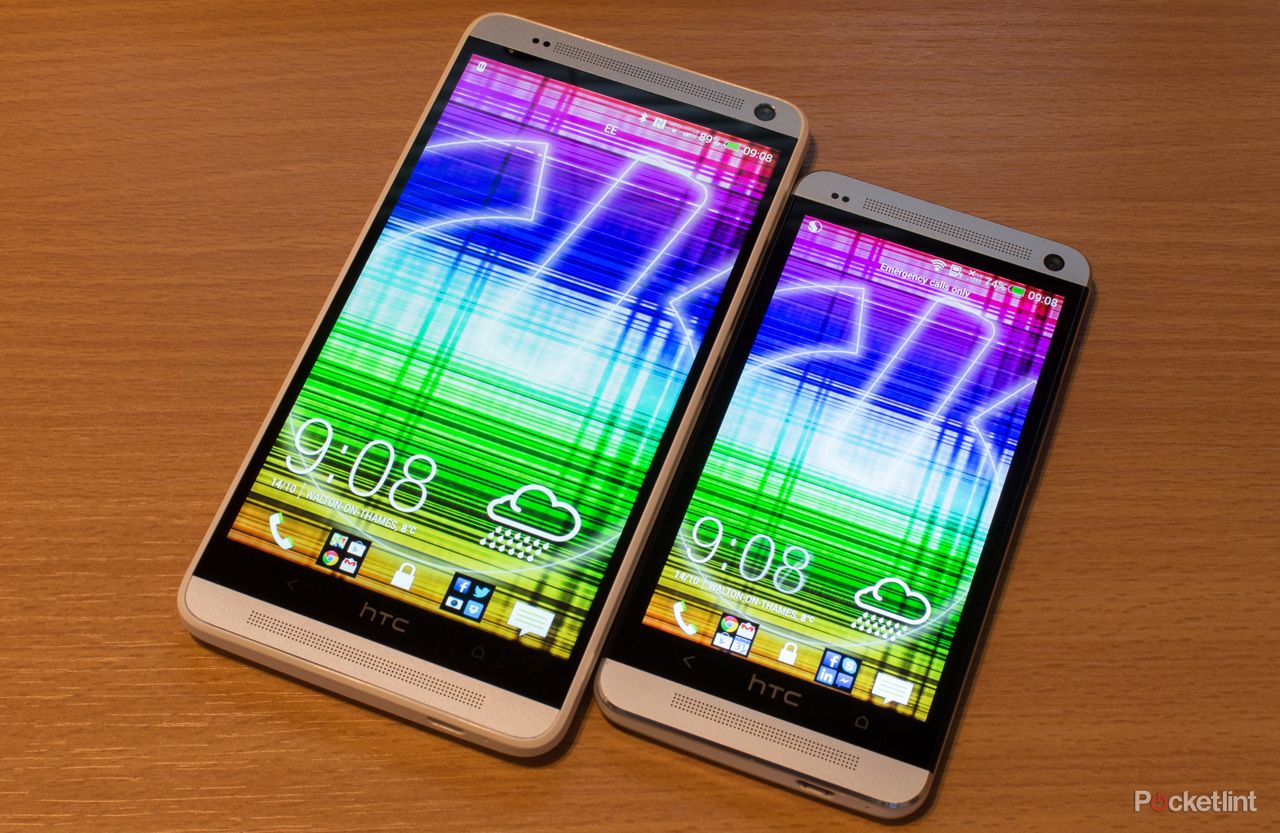
From the front, the dual BoomSound speakers that sit above and below the display offer the same micro-drilled holes as the One and the One mini, finished in the same high-quality aluminium.
There's a plastic band running around the HTC One max, however, that binds it all together. In that sense, the HTC One max is closer in design to the HTC One mini than the original One. Call it the HTC One mini maxi if you will.
READ: HTC One review
Of the trio, the original One is the best looking, in our opinion, but compared to some other large devices out there, the HTC One max is still eye-catching.
However, there's been a significant change with this model: the One max has a removable back cover. It's a metal plate, released with the slide of the switch on the side. That gives you access to the innards, although it's only for access to the SIM card tray and the microSD card slot.
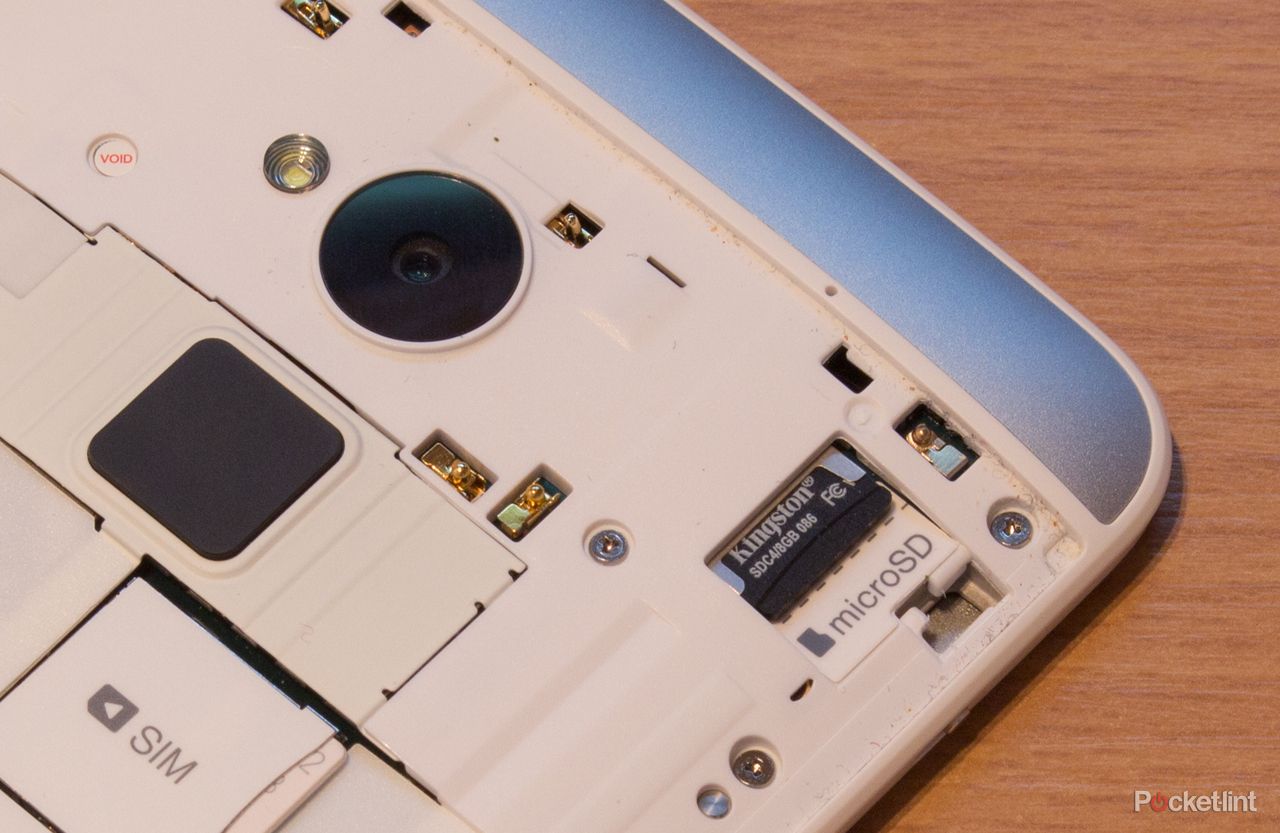
The battery is sealed into the body, so isn't replaceable, and therefore there's nothing else worthy of attention under the back cover. Which leaves us wondering exactly why HTC didn't opt for pin-accessed ports like the HTC One, which would have been tidier overall.
We say tidier, because it's too easy to put the back cover on wrong. This is perhaps a limited problem, because you won't take it off all too often. Give it a bit of wiggling to ensure the tabs are engaged so things are almost right and it'll connect but we still found that the top right-hand corner, next to the release catch, never sat flush to the housing as well as we'd like.
To the max
The design takes the max name in a literal sense. This isn't just a device with a large display, it's a device that's large overall. In fact, it's huge. Measuring 164.5 x 82.5 x 10.29mm and weighing 217g, it's difficult to see it as anything but a massive phone.
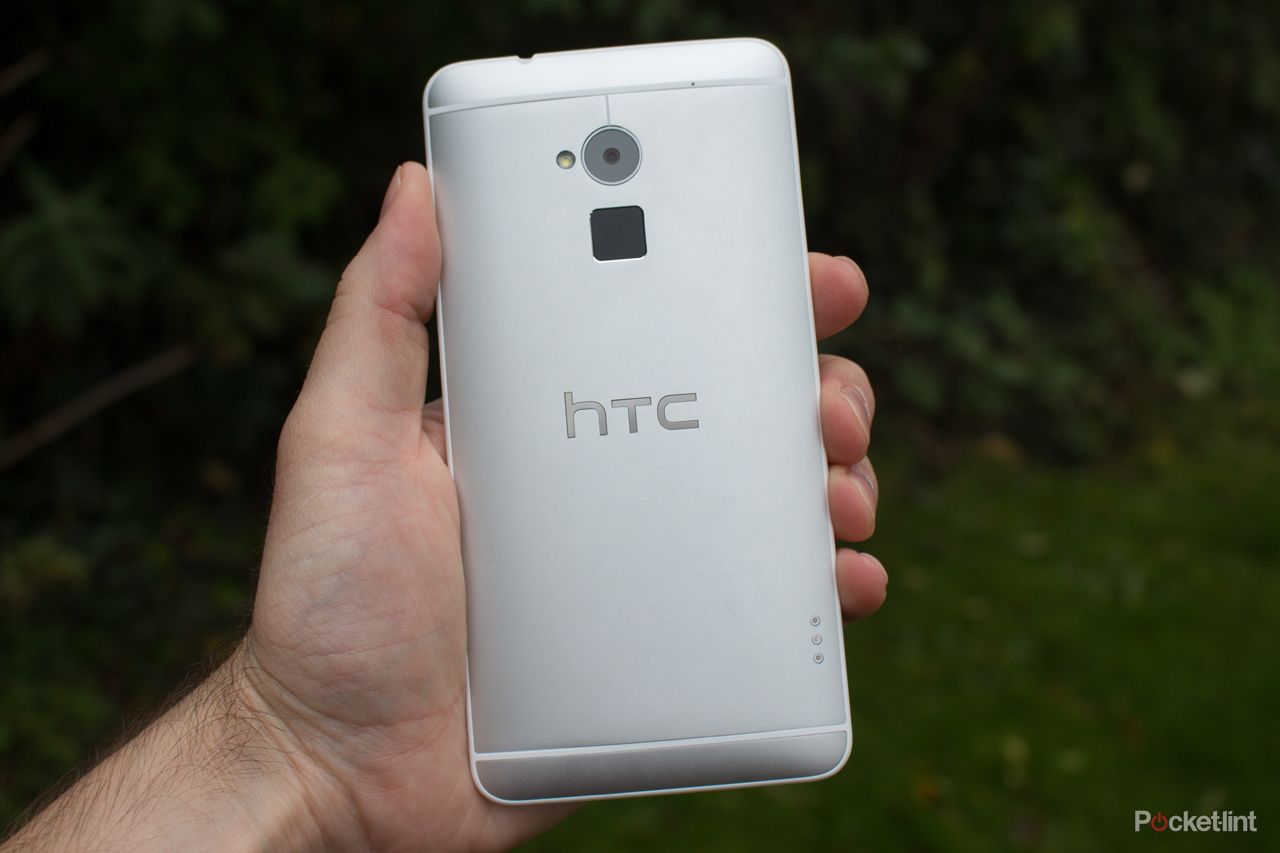
The trade-off is that not only get a huge display to go with it, you get additional length from the BoomSound speakers. HTC has made a rod for its own back here. We love BoomSound, as its one of the best features to make the One family of devices stand out, but those speakers need space above and below the display, where rivals can shave off many millimetres. If space in your pocket is a concern, you may have to decide just how much you want the best-in-class audio that BoomSound delivers.
The Galaxy Note 3, by comparison, is slightly smaller on the display at 5.7-inches, but is 2mm thinner, 2mm narrower and a substantial 13mm shorter in height. It's also nearly 50g lighter too, whilst managing to integrate the S Pen stylus into the chassis. HTC hasn't gone down the integrated stylus route - outside of the UK and US there will be an accessory stylus, sold separately, but other than your pocket there'd be nowhere to store it.
READ: Samsung Galaxy Note 3 review
The quality of the finish of the HTC One max, along with the curved back means it sits in the hand - if, that is, you have big hands - pretty well, but it's never really going to be a one-handed affair. That has some advantages, as using two thumbs to bash out emails on the keyboard is a breeze, but trying to trace in words with one hand while standing on the bus is something of a challenge.
Fingerprint foibles
One of the more distinctive design features of the HTC One max is its new fingerprint scanner. The knee-jerk reaction might be to say that HTC copied the iPhone 5S, but the One max was well into development before Apple's latest device launched.
READ: Apple iPhone 5S review
With a handset as large as the One max, the power button has moved to the side. The placement is ideal, meaning you can tap the button with your thumb as you grip the phone to wake it up.
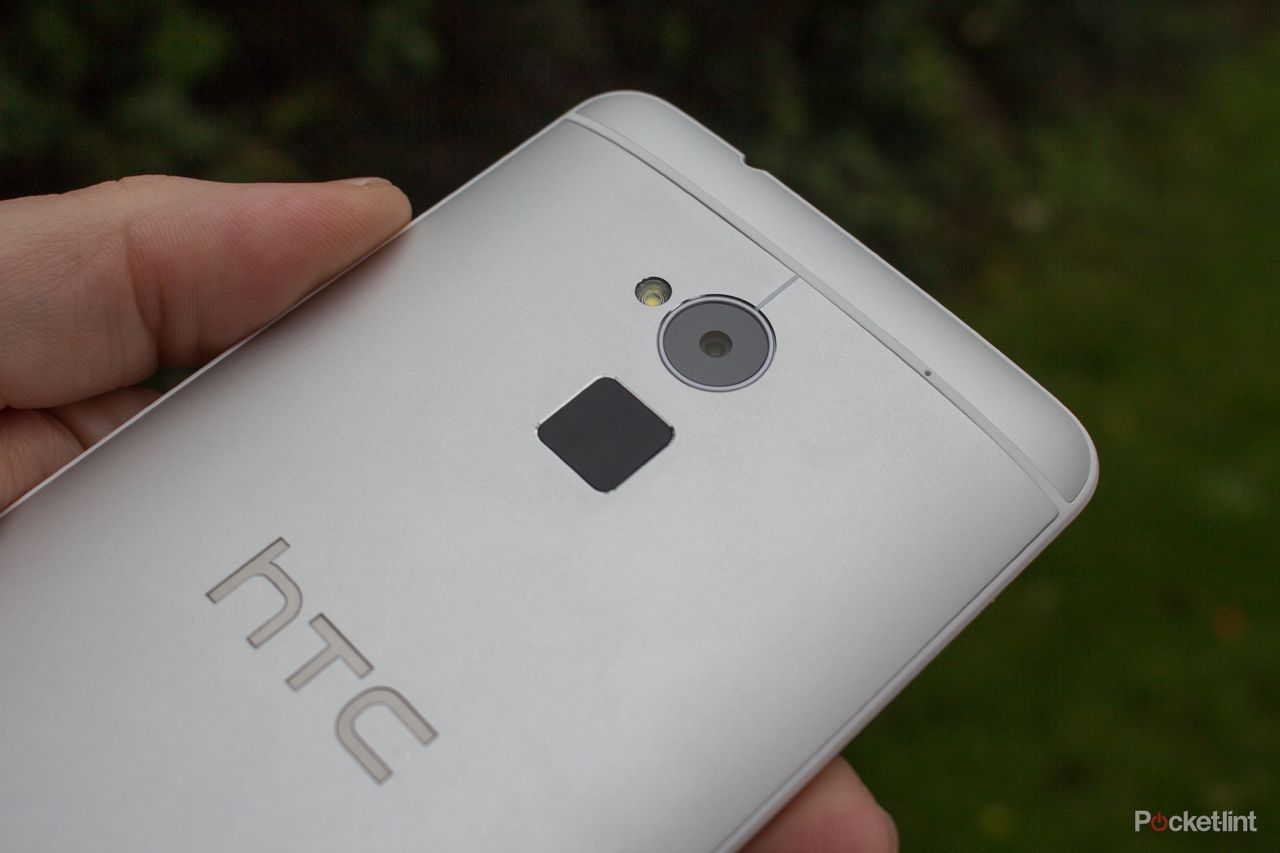
The fingerprint scanner, however, lies on the back, beneath the camera lens. The design, HTC says, is so that as you grip the One max you can swipe a finger over the scanner to unlock it. In practise we found that works just fine: the scanner is in a place that your finger often is.
We've had about a 90 per cent success rate with the One max's scanner over the week we've been using the phone, but it takes some getting used to and we know that some others who had the device prior to launch didn't have such success.
Initially it's tricky to swipe the scanner without swiping the camera lens. There's little difference in feel between the two and they are only separated by about 6mm, but as time has passed, we've found the process has become more natural.
Rear-placement of interactive points on devices is a tricky business, something we noted with the Oppo N1 phablet that incorporates a touch panel on its rear.
READ: Oppo N1 hands-on
But it's irritating that you have to press the standby button before you can swipe to unlock the phone, so it's a two-stage process and we'd much rather it was one.
Much as we hate to say it, the fingerprint scanner on the iPhone 5S is much better when it comes to unlocking: you press the button, it scans, and you're in. It's one process. On the HTC One max, we suspect that some will find it fiddly from the off, and disable the feature in favour of regular on-screen security.
There is a saving grace, perhaps, and that's the ability to store up to three fingers and assign different apps to each. That means you can have one finger to unlock the phone, another to unlock and launch the camera, a third to unlock and open Gmail, or whatever.
This works well enough, we've found, meaning fast(ish) launch on the camera. Although, we do wish there was a dedicated button as you'll find on Sony's devices instead.
READ: Sony Xperia Z1 review
Super-sized display
The big talking point of the HTC One max is going to be the display. It has a 5.9-inch Super LCD3 display with a full HD resolution, 1920 x 1080 pixels. That gives you a pixel density of 373ppi.
The display panel is the same technology as the original HTC One, so it's unsurprising to find that it's also very good: nice bright colours, excellent viewing angles and plenty of brightness make for a great experience.
The size means that the pixel density drops a little, so technically it isn't as sharp as smaller displays, but given the size on offer, that doesn't really matter: things look very good on the HTC One max.
It isn't as capable as the HTC One however. Set these two devices side-by-side and the HTC One gives you cleaner, brighter whites and, we feel, a better delivery of colours with a little more saturation.
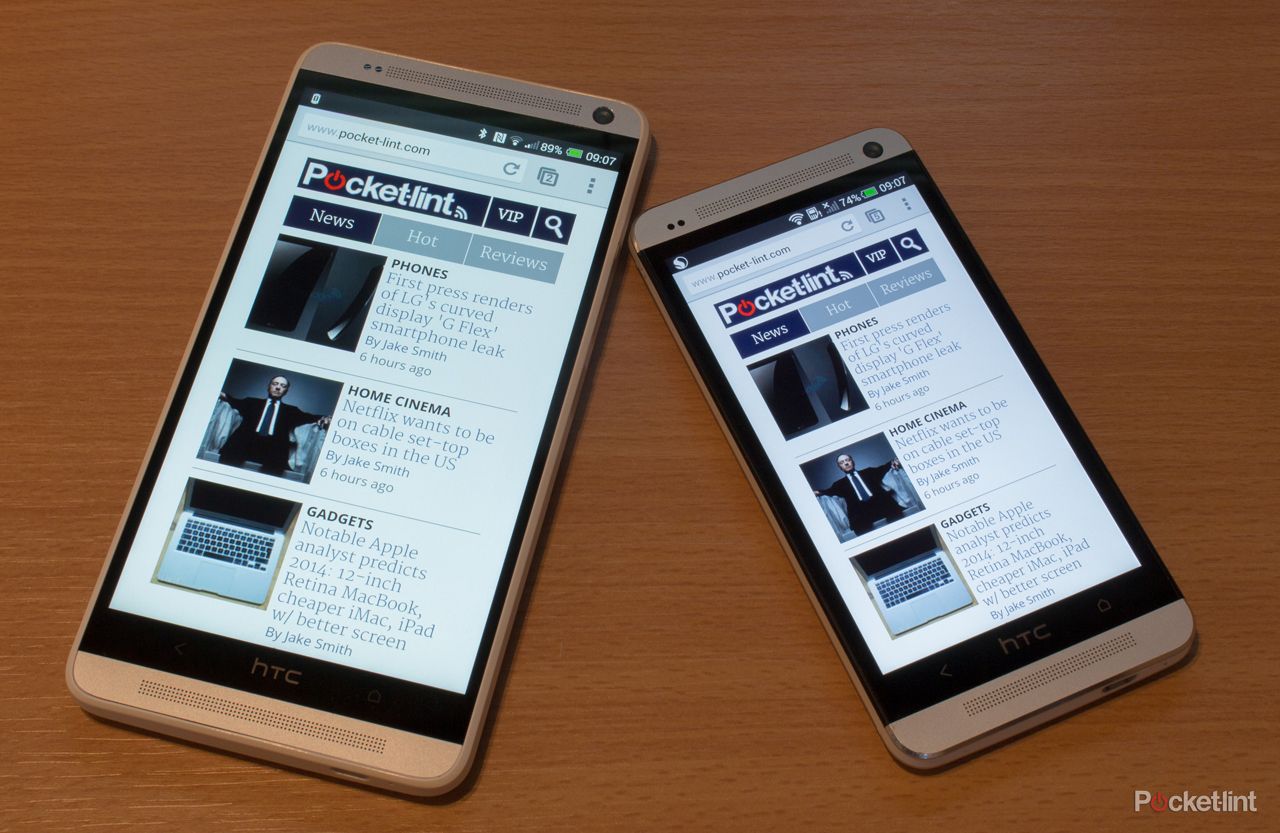
The large screen means that the HTC One max is poised to be a super device for games and videos, because there's so much on display to play with. And that is indeed true. Fire up video, be that streaming from Netflix or Play Movies, and things look stunning.
Viewing photos is a pleasure and creating those video highlights to show to your friends has real impact, because there's so much space.
Not so hardcore hardware
Scan down the spec sheet and alarm bells might start ringing. Not only does the HTC One max look like the HTC One from the outside, but much of the internal hardware is the same too. It has a 1.7GHz quad-core Qualcomm Snapdragon 600 chipset and 2GB of RAM, the same as the HTC One.
Rivals, meanwhile, are rolling out with the latest Qualcomm Snapdragon 800 chipset and in the case of the Samsung Galaxy Note 3, 3GB of RAM. That means that the HTC One max isn't going to be the most powerful phablet at the party, despite being the newest device.
READ: LG G2 review
HTC says that the aim is to balance performance and cost and to perhaps calm those spec sheet fears. And the HTC One max does perform very well. It might have slightly older hardware, but it's still snappy in day-to-day operation with no sign of lag and it's fully capable of playing the latest games.
Samsung Galaxy Note 3 owners will perhaps laud it over the One max because here you don't get the ability to capture 4K video. As useful as that isn't, it's probably fair to say that in a year's time, the Galaxy Note 3 well be better placed to deal with increased demands that may come along.
That said, the experience using the HTC One max is very much like the HTC One in typical use. Startup times are more or less the same, and ask it to open up a demanding game like Real Racing 3 and you'll find it slightly faster to get started, perhaps down to software enhancements. The screen space means gaming is an absolute joy and there's no difference in performance once you get that car on the track, compared to a more powerful device.
There's the option of 16 or 32GB of internal storage on the HTC One max, but there's also support for microSD cards, up to 64GB. To accommodate this, there are a range of settings to govern what gets saved where. We very much welcome the addition, it feels like an essential move to keep the One max competitive and it's much easier to carry collections of photos, music and movies without the worry of filling the device. Apps need to be rooted to the on-board hardware rather than the microSD, whereas data such as photos and so forth can live happily on an additional card.
The IR blaster - used for infrared control of things such as your TV - is still included too, but no longer occupies its place in the standby button as it did on the HTC One. It sits on the top and HTC's clever TV app means you can set your handset to control your living room devices, or simply turn up the volume on the football in the pub.
Sense 5.5 and Android 4.3
The HTC One max launches with the latest version of Android and HTC Sense. We really liked Sense 5 on the HTC One and Sense 5.5 on the One max takes it and refines it, making some crucial updates to give you a better experience daily use.
We've looked at these changes in detail in a review of HTC Sense 5.5, which is worth reading if you're a fan of HTC's user interface, but we'll also cover the main changes here too.
READ: HTC Sense 5.5 vs Sense 5: New features, tweaks and changes reviewed
BlinkFeed gets a lot of changes, with a new sideswipe menu that lets you easily filter, search and add content. There are a number of new options for content, including the integration of Google+ and RSS feeds. The result is that it's now much easier to create custom feeds, be that from your favourite website or on your favourite topic. If you don't like BlinkFeed, there's also the option to switch it off.
There's also been a switch around in the Gallery. Navigation is now cleaner and simpler, with HTC Sense 5.5 ditching many of the dropdown menus and opting for a carousel style arrangement, so you can swipe across to view different things with ease.
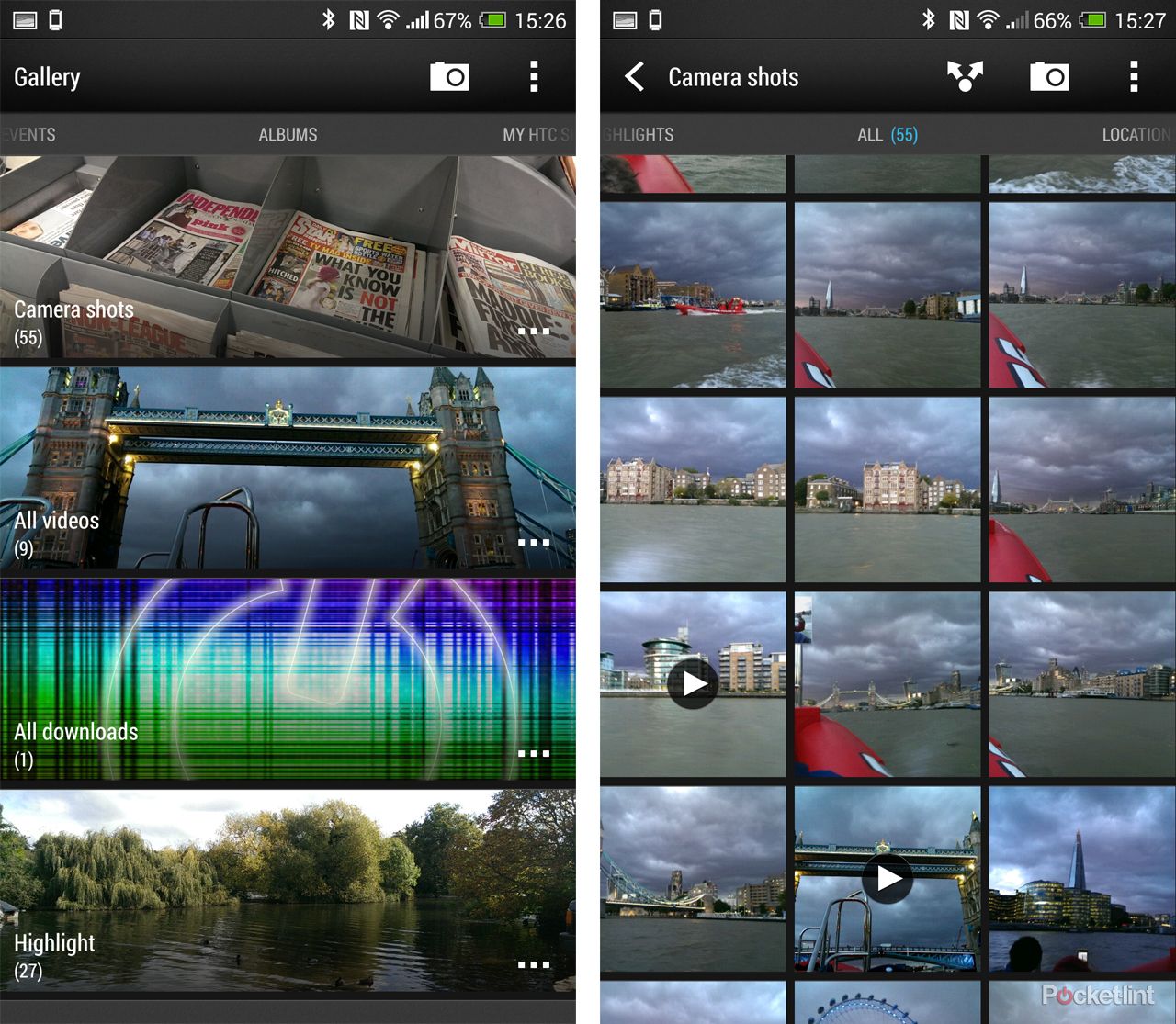
Photo collections are better organised, with the ability to view different locations within events and create video highlights from just about any point.
Video highlights - which pulls together your photos, videos and Zoes (HTC's 3-second video clip), themes them and adds music - is one of Sense's nicest features. It's been refined in Sense 5.5, so it's easier to control the content, with an auto-selection tool that will search for similar content to the first picture you pick.
You can now also add your own music, with beat mapping meaning that transitions stay in time. The results are great and easily shared using HTC Share, which also has a section in the Gallery, so you can see what you have in HTC's sharing portal.
HTC Share does have some limitations though: there's a limit of 250MB along with a time limit of 160 days, so it is designed to share rather than archive. However, you can save video highlights locally, as well as convert them to MP4 to upload to Facebook or YouTube if you wish.
Another nice touch is being able to take a Zoe and turn it into a GIF, with a selection of editing options. It's quick and easy to do.
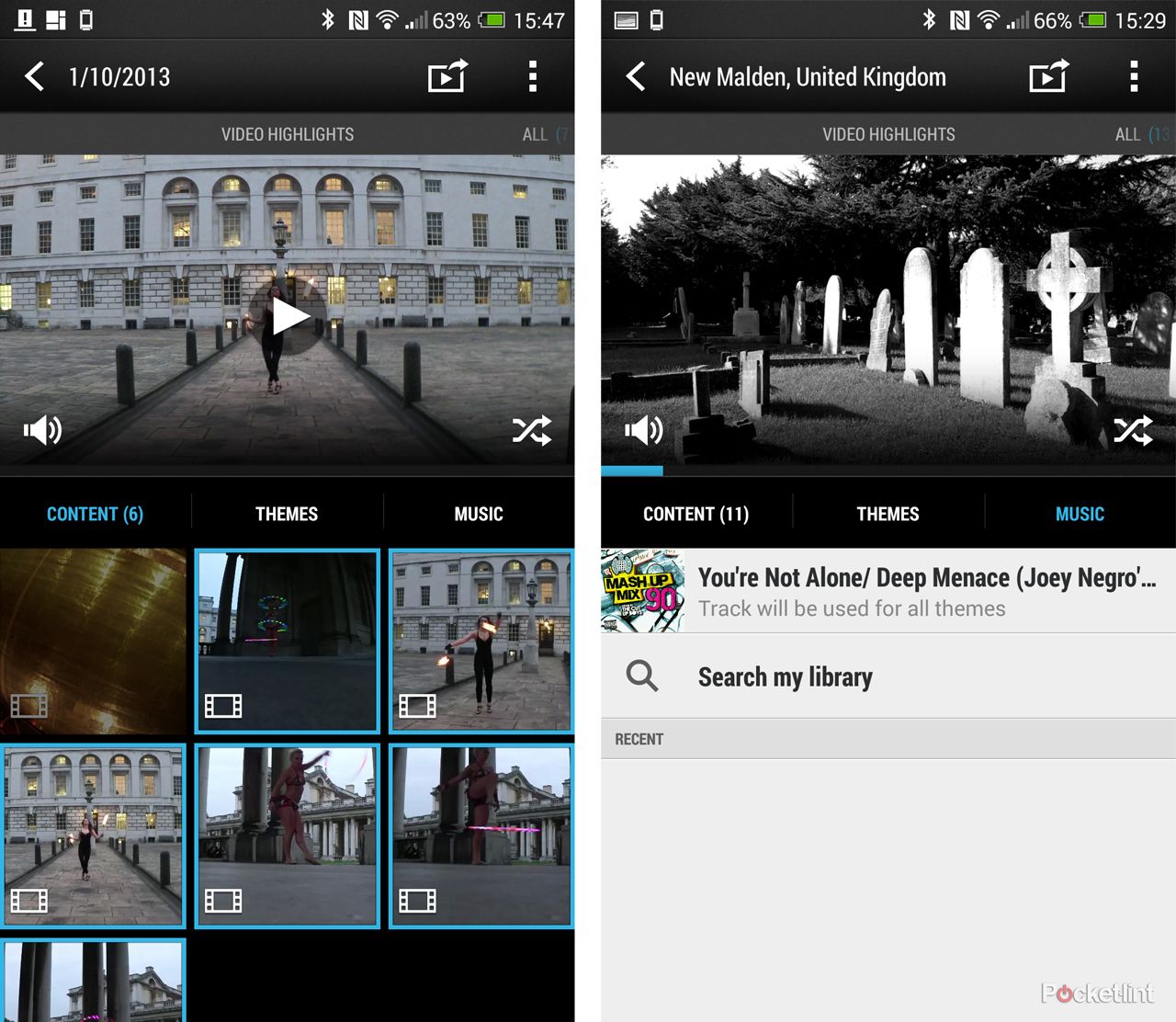
However, for all the refinement that HTC Sense brings, there's nothing here in the HTC One max that really uses the screen size. That means, in every way, the One max is just a giant smartphone experience: unlike the Samsung Galaxy Note there's no play to split screen multitasking, nor clever S Pen features.
Some might say that that's a waste of screen real estate in the One max because there's nothing here that you won't get on the HTC One once it is updated to Sense 5.5 as well. If you just want to go bigger, then the HTC One max delivers that experience, but we can't help feeling that HTC could have condensed icons and increased the density of information in some cases to bring additional benefit to the large display.
BoomSound and calling
We've praised BoomSound before and we think it's class-leading for smartphone audio. That's a real strength of the HTC One max, as it has the largest speakers of the One family so can make the most noise. The BoomSound speakers really are fantastic, which means games, videos and music all sound great.
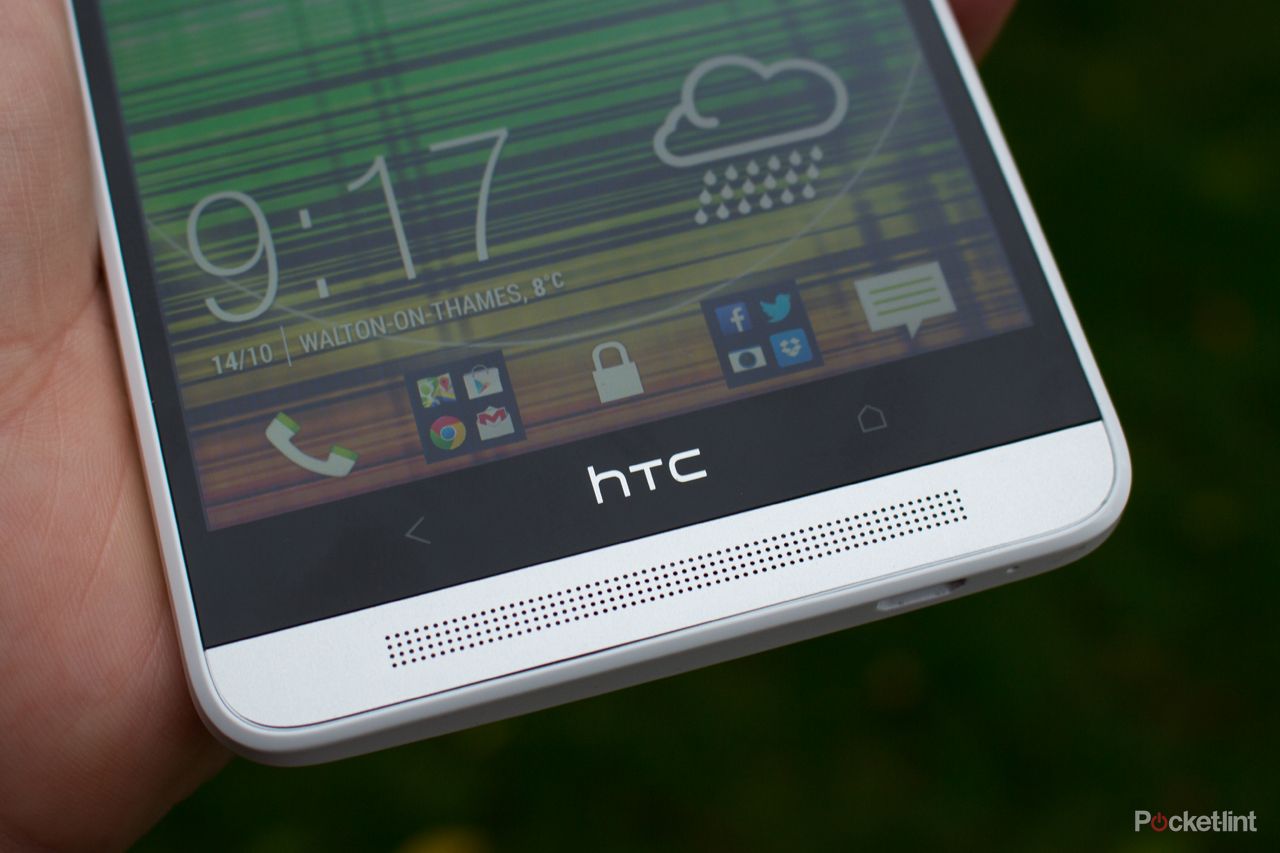
Although the One max is on the large side when it comes to making calls, the BoomSound speaker next to your ear makes for nice, rich sounding calls too. We had no problem with volume and no problems being heard when talking on the phone.
There's no Beats Audio in the HTC One max, so those that liked the red logo will be disappointed (even if it had a tendency to rub off over months of wear). Perhaps strangely there's nothing in its place and, try as we might, we couldn't find any native EQ settings to tweak the audio performance of the device when using headphones. That said, plug in and things sound quality, along with plenty of bass delivery.
Smile: You're on Zoe camera
The camera is the front line of smartphone wars and the HTC One max has the 4-megapixel UltraPixel sensor as found in the other One devices. The only slight change here, however, is that it doesn't have optical image stabilisation as the HTC One does, which seems odd considering the size of the One max.
READ: HTC One camera review
The camera interface is clean and clear with all the controls you need right at your fingertips and a few new options. There's a new dual shot mode that will capture the front and rear cameras at the same time - a feature that also appeared on the Samsung Galaxy S4 earlier in the year.
But most of the camera experience remains the same as it did previously, and that's an experience we liked, as there are a lot of clever options and effective features like HDR (high dynamic range), touch focusing, burst shooting and all the rest.

The HTC One max will produce some lovely photos when given good light, but things downgrade as the light drops. Noise can appear in shadows and colour blocks, with a resultant lack of detail; the low resolution gives you little scope for zooming in and recropping. The Nokia Lumia 1020 still leads the charge in this regard.
READ: Nokia Lumia 1020 real-world camera test
The performance from the camera overall is pretty good. It isn't the best in class, just as the HTC One isn't, but we've found it to be consistent and we like the number of clever options it offers.
The front-facing camera is pretty good too. The 2-megapixel sensor offers a neat countdown timer for those essential selfies and we've found it to deliver some of the best results around.
Video is offered at full HD with fast continuous autofocus and we've been generally impressed with the video results as it seems pretty reliable in capturing good quality footage.
There's also the Zoe capture mode, which gives you a 3-second snippet from which you can extract stills or create fancy effects, including making GIF files. As before Zoe is a lot of fun to play with, especially when rolled into the video highlights that Sense 5.5 will produce.
Battery life
The HTC One max has a 3300mAh battery which is a reasonable capacity given the size. As we've said, you can't access it to switch the battery out, but hopefully you'll get through the day without the need.
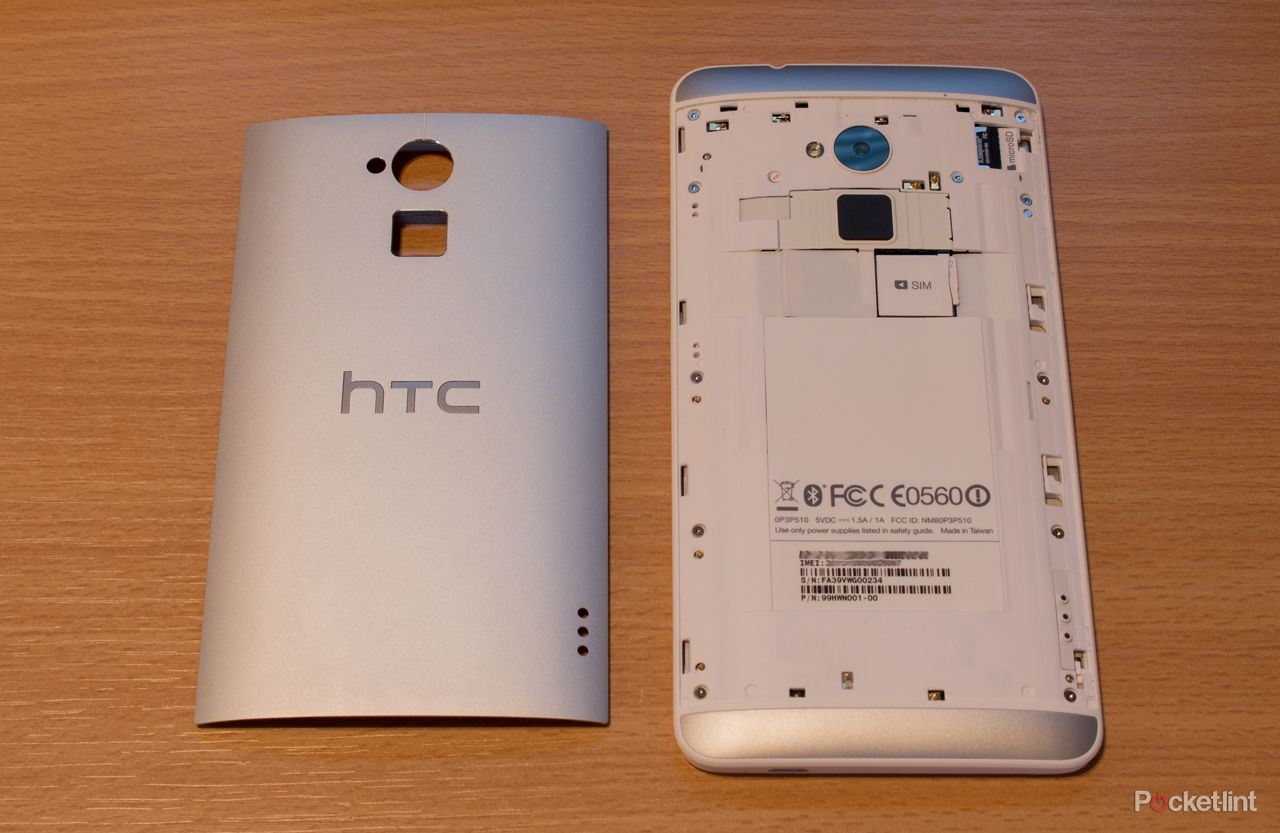
We're heavy users and we've found that we've managed to get through each day with the device without having to run for a wall charger. At weekends the performance has been great, with lighter use getting us through until evening with ease.
Fire up video, start playing demanding games and, of course, you'll start draining that battery much faster. One potential way around this in the future is that HTC will be launching a flip case that integrates a 1200mAh battery, giving you 4500mAh for those demanding more endurance. The case connects via the pogo pins that you may have noticed on the back of the device.
To recap
The HTC One max offers the HTC experience on the big screen, but offers little novelty other than the size. The design looks good, microSD card expansion is useful and the BoomSound speakers are the best around, but this huge phone might be took big for some to handle and never really makes use of the screen size on offer.

